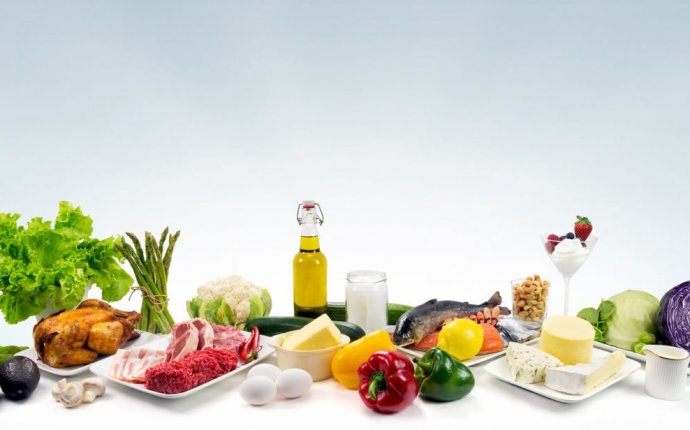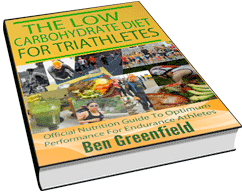
Low carb tips for weight loss
 A few days ago, I posted about the .
A few days ago, I posted about the .
If you recall from that article, I did mention that I am certainly a fan of low carbohydrate diets, and referenced how physically active individuals may be able to actually benefit from strategic low carbohydrate intake in my article or (if you’re a Rock Star Triathlete Academy member) the article
I summed it up this way:
In a nutshell, pun intended, as you begin to increase carbohydrate consumption above the levels that you need for survival or periods of intense physical activity, you lose your ability to rely on fat burning mechanisms, and you experience the damaging effects of chronically elevated blood sugars, including neuropathy (nerve damage), nephropathy (kidney damage), retinnopathy (eye damage), increased cardiovascular disease risk, potential for cancer progression (tumor cells feed on sugar) and bacterial or fungal infection.
So if the dangers of a low carb diet that I talked about didn't deter you, and you're bent on banning bread, take heart. There is a way to do a low carbohydrate diet the right way. Here are 10 ways to eat a low carbohydrate diet while avoiding common mistakes.
1. Time Carbohydrates Wisely.
This one is a biggie, so we'll start with it. One of the main reasons for eating a low carbohydrate diet is because your blood sugar levels stay far more stabilized. But there is a time that you can consume carbohydrate without causing your blood sugar levels to go on a roller coaster ride – and that time is immediately before, during, or after exercise.
So if you are on a low carbohydrate diet, I highly recommend carbohydrate intake for exercise sessions that are 1) intense; 2) involve weight training; 3) are longer than 2 hours in duration.
Although many folks use this as an excuse to eat more carbs than they should there is certainly truth to the fact that “fat burns in the flame of carbohydrate” – meaning if you are constantly carb depleted due to zero calories of glucose intake, you can shut down your body's natural fat burning capabilities. So if you're planning on exercising, try get at least 500-600 calories of carbohydrate per day, and eat them before, during or after your exercise session if you want them to not affect your blood sugars levels in a potentially damaging way.
2. Take Into Consideration Your Body Fat Levels.
If you're fat, you're going to have more fat to burn. Look down at your waistline. Do you have layers of fat that you can grab? A beer belly? Muffin-tops? All of that is fat that can be mobilized if you are on a low carbohydrate diet.
But if your body fat is under 7-8% as a male, or in the low teens as a female, then it is highly likely that you're going to struggle with a consistently low carbohydrate intake – specifically during exercise sessions.
So if I have a client who is 30% body fat, I have no issues with that client staring at the ceiling awake at night craving carbohydrates as their body mobilizes fat tissue for energy, and I generally continue to advise them to watch their carb intake. But if that person is 6% body fat, it is far more likely that they're going to need that extra fat for insulation or essential fat stores, in which case it might be a good idea to go slam a bowl of rice.
3. Don't Eat Processed Crap.
I mentioned this in my last article that typical “low carbohydrate” meal replacement bars and shakes, ice creams or ice cream sandwiches, and other low carb or sugar-free snacks often contain potentially unhealthy ingredients like maltitol, and are chock full of preservatives and highly processed ingredients. If your low carbohydrate diet involves boxed, wrapped and packaged food, it probably falls into this category.
Get this through your head – whether a food is low carbohydrate or not, if it is something you see advertised on TV, magazines, or newspapers you probably shouldn't eat it. If it's something you can easily recognize and identify where it grew and how it go to your plate, it probably is OK to eat.
This means that avocados are cool. Guacamole from your grocery store that has (and this is a popular brand):
Skim Milk, Soybean Oil, Tomatoes, Water, Hydrogenated Vegetable Oil (Coconut Oil, Safflower and/or Corn Oil), Eggs, Distilled Vinegar, Avocado Pulp, Onions, Salt, Nonfat Dry Milk, Egg Yolks, Lactic Acid, Sugar, Whey, Sodium Caseinate, Mono and Diglycerides, Gelatin, Soy Protein Isolate, Xanthan Gum, Corn Starch, Guar Gum, Mustard Flour, Black Pepper, Red Chili Pepper, Potassium Sorbate and Sodium Benzoate (Added to Retard Spoilage), Coriander, Lemon Juice Concentrate, Cellulose Gel, Cellulose Gum, Locust Bean Gum, Disodium Phosphate, Cilantro, Gum Arabic, Extractives of Garlic and Black Pepper, Paprika Oil, Oregano, Thyme, Bay Leaf, Calcium Chloride, Citric Acid, Dextrose, Artificial Color (FD&C Blue No. 1, FD&C Red No. 40, FD&C Yellow No. 5, FD&C Yellow No. 6).
is not cool. This is just one example, but I think it gives you a pretty good idea of what I'm getting at. Eat real food – not processed crap.














